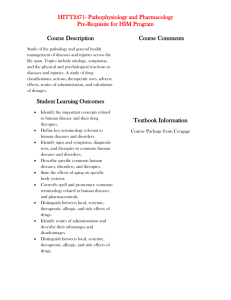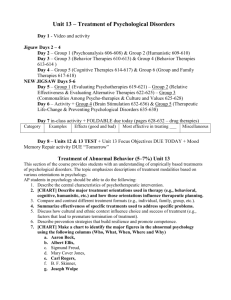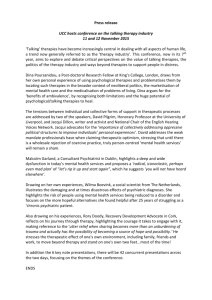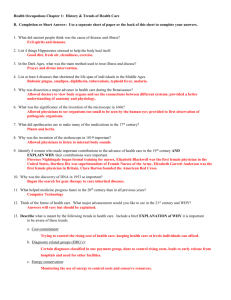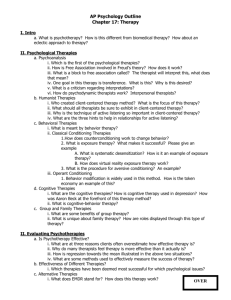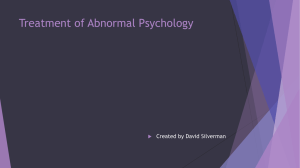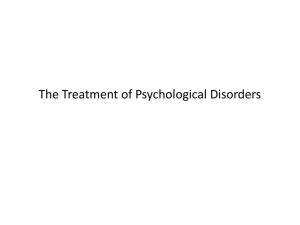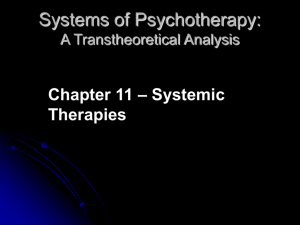CH 14 OUTLINE - Treatment of Psychological Disorders
advertisement
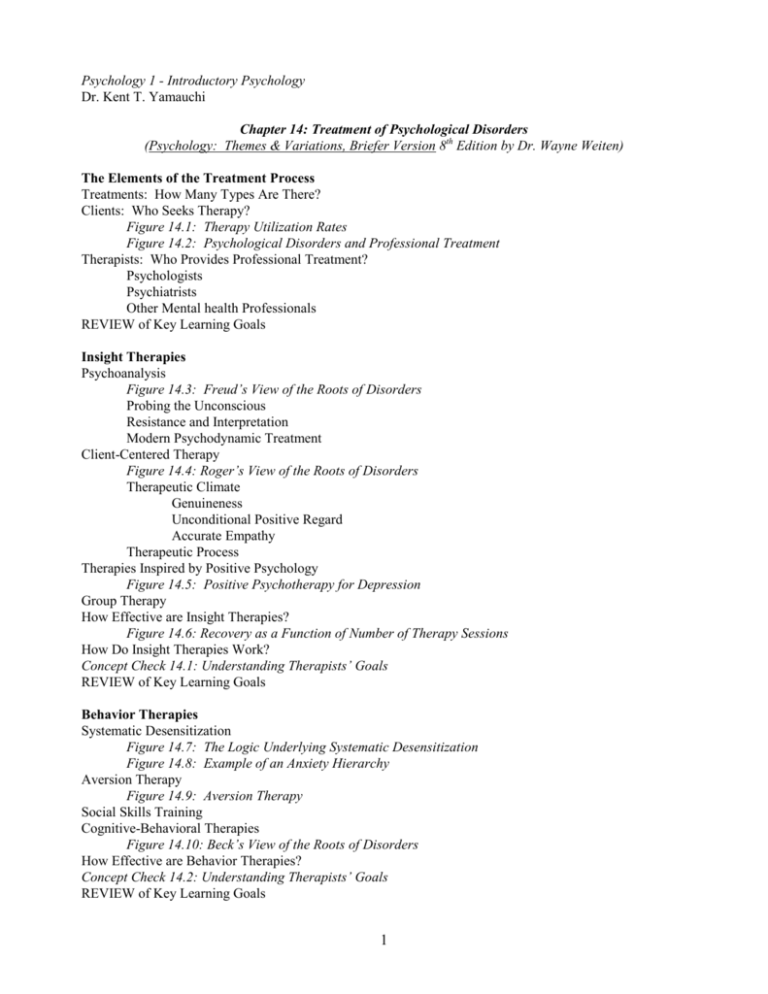
Psychology 1 - Introductory Psychology Dr. Kent T. Yamauchi Chapter 14: Treatment of Psychological Disorders (Psychology: Themes & Variations, Briefer Version 8th Edition by Dr. Wayne Weiten) The Elements of the Treatment Process Treatments: How Many Types Are There? Clients: Who Seeks Therapy? Figure 14.1: Therapy Utilization Rates Figure 14.2: Psychological Disorders and Professional Treatment Therapists: Who Provides Professional Treatment? Psychologists Psychiatrists Other Mental health Professionals REVIEW of Key Learning Goals Insight Therapies Psychoanalysis Figure 14.3: Freud’s View of the Roots of Disorders Probing the Unconscious Resistance and Interpretation Modern Psychodynamic Treatment Client-Centered Therapy Figure 14.4: Roger’s View of the Roots of Disorders Therapeutic Climate Genuineness Unconditional Positive Regard Accurate Empathy Therapeutic Process Therapies Inspired by Positive Psychology Figure 14.5: Positive Psychotherapy for Depression Group Therapy How Effective are Insight Therapies? Figure 14.6: Recovery as a Function of Number of Therapy Sessions How Do Insight Therapies Work? Concept Check 14.1: Understanding Therapists’ Goals REVIEW of Key Learning Goals Behavior Therapies Systematic Desensitization Figure 14.7: The Logic Underlying Systematic Desensitization Figure 14.8: Example of an Anxiety Hierarchy Aversion Therapy Figure 14.9: Aversion Therapy Social Skills Training Cognitive-Behavioral Therapies Figure 14.10: Beck’s View of the Roots of Disorders How Effective are Behavior Therapies? Concept Check 14.2: Understanding Therapists’ Goals REVIEW of Key Learning Goals 1 Biomedical Therapies Treatment with Drugs Antianxiety Drugs Antipsychotic Drugs Figure 14.11: The Time Course of Antipsychotic Drug Effects Antidepressant Drugs Figure 14.12: Antidepressant Drugs’ Mechanisms of Action Mood Stabilizers Evaluating Drug Therapies Electroconvulsive Therapy (ECT) Effectiveness of ECT Risks Associated with ECT New Brain Stimulation Techniques Concept Check 14.3: Understanding Biomedical Therapies REVIEW of Key Learning Goals Illustrated Overview of Five Major Approaches to Treatment (pages 504-505) Current Trends and Issues in Treatment Grappling with the Constraints of Managed Care Increasing Multicultural Sensitivity in Treatment REVIEW of Key Learning Goals Institutional Treatment in Transition Figure 14.14: Dorothea Dix and the Advent of Mental Hospitals in America Disenchantment with Mental Hospitals Deinstitutionalization Figure 14.15: Declining Inpatient Population at State and County Mental Hospitals Mental Illness, the Revolving Door, and Homelessness Concept Check 14.4: Identifying the Contributions of Major Theorists and Researchers REVIEW of Key Learning Goals Reflecting on the Chapter’s Themes REVIEW of Key Learning Goals Personal Application: Looking for a Therapist Where Do You Find Therapeutic Services? Table 14.1: Principal Sources of Therapeutic Services Is the Therapist’s Profession or Sex Important? Is Therapy Always Expensive? Is the Therapist’s Theoretical Approach Important? Figure 14.16: Estimates of the Effectiveness of Various Approaches to Psychotherapy What is Therapy Like? REVIEW of Key Learning Goals Critical Thinking Application: From Crisis to Wellness – But Was It the Therapy? Table 14.2: Critical Thinking Skills Discussed in this Application REVIEW of Key Learning Goals Psych 1 Ch 14 Outline - Weiten 8th Edition 2
